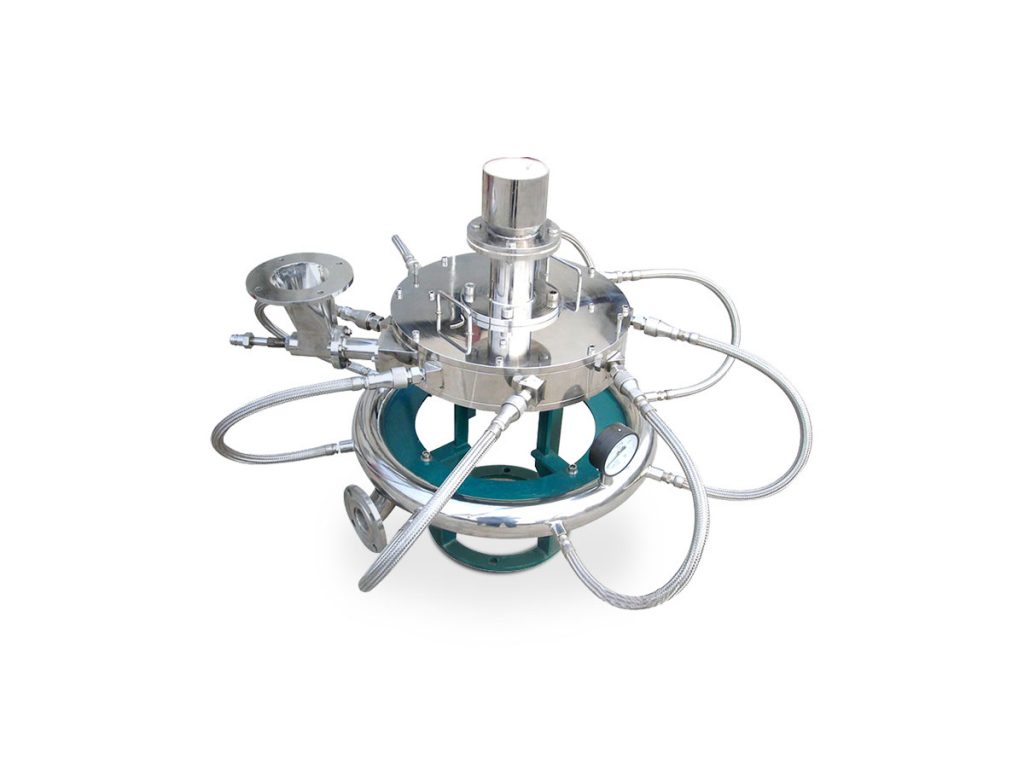Application of Jet Milling Technology in API

The application of jet milling technology in API can significantly improve the appearance and properties of solid preparations, as well as various pharmaceutical parameters such as solubility, dissolution rate, absorption rate, adhesion, and bioavailability.
Jet milling technology and its characteristics
1. The crushing temperature is low, and the Joule-Thomson effect of the high-speed jet flow, when the gas jet expands, it will absorb heat by itself, thus offsetting the heat generated by the collision and friction of the material.
2. Crushed in a confined space, no leakage of material dust.
3. The moisture of API often affects the crushing effect. Generally, the less moisture, the easier it is to crush, and the moisture content is required to be less than 4%.
4. Jet grinding parameters: grinding chamber diameter (mm), grinding pressure (Mpa), air consumption (m3/min), feeding amount (g/min), processing capacity (kg/h), feeding particle size, etc.
5. Grading particle size control parameters: the rotational speed of the centrifugal air classifying wheel and the secondary air volume.
The structure of the fluidized bed jet mill
(1) The material is sent into the crushing chamber through the feeder;
(2) The compressed air passes through the nozzle to generate a supersonic jet flow to form a centripetal reverse jet flow field in the crushing chamber, which is mixed and fluidized with the material at the bottom of the crushing chamber, and the accelerated materials meet at the intersection point of the nozzle, resulting in violent impact and shear cut, rub and crush;
(3) The material moves with the airflow to the flow field generated by the high-speed turbine (frequency conversion adjustable) on the upper part of the crushing chamber, and the fine powder moves with the airflow to the upper turbine classifier; the coarse particles are thrown to the cylinder under the action of centrifugal force Near the wall, and fall back to the lower part of the mill chamber together with the stall coarse powder for crushing.
(4) The fine powder that meets the fineness requirements is sent to the cyclone separator for collection through the flow channel of the grading sheet, and a small amount of residual fine powder is further separated from gas and solid by the bag filter, and the air is discharged out of the machine by the induced draft fan.
(5) Material level control in the crushing chamber, the feeding speed of the feeder is automatically controlled by the dynamic current transmitter on the classifier, so that the crushing is always in the best gas-material ratio state.
The part of the jet mill that is easy to stick to the material
The airflow classification wheel (speed can be adjusted arbitrarily) forms a centrifugal force in the classifier, and the air-powder mixture entering the classification wheel is affected by the centrifugal force, which can adjust the centrifugal force in the classifier to achieve the purpose of separating materials with specified particle sizes.
The airflow classification wheel is the main part to control the particle size of the powder, and the particles produced at a high speed are fine in diameter. The crushed API moves to the classification wheel with the airflow, and the fine particles pass through the airflow classifier and enter the cyclone separator and dust collector with the airflow, but some particles are stuck in the gap of the classification wheel due to the viscosity of the API and the structure of the impeller. , After a period of time, it will stick more and more on the grading wheel, and finally cause blockage.
Through the understanding of the working principle and characteristics of the fluidized bed jet mill, the cleaning difficulty of the fluidized bed jet mill with grading impeller will be relatively high, and the sticky material will cause some material loss is inevitable, but the particle size D value of the output relatively high. If a disc-type airflow mill is used without a classifying wheel, the sticky material situation will be much better
